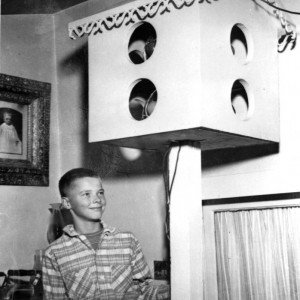Signal History
October 4, 2012
The traffic signal systems of today are the result of a stream of innovative technologies starting with a simple light box on a pole.

Utah has approximately 1700 traffic signals owned by city, county and state governments. Sophisticated and efficient, modern signal systems are coordinated and monitored by traffic engineers and centrally controlled by computers. Devices that detect cars can adjust signal timing along traffic corridors to allow for directional traffic flow throughout the day. When needed, traffic engineers can make changes to keep traffic flowing.
Effective signal coordination improves safety, saves fuel, reduces emissions, enhances traffic flow, and decreases travel delay and traffic congestion.
The story of how modern signal systems were developed starts in Utah; the first traffic signal for automobiles was put into service in 1912 in Salt Lake City at the intersection of Main Street and Second South.
Salt Lake City Police Officer Lester Wire saw the need to help move traffic through intersections safely and efficiently. He designed and built a pole mounted box that housed green and red lights. Wires connected to the trolley system overhead carried electricity. The lights were changed manually by an officer who stood nearby and used his discretion to make the switch.
UDOT has created an exhibit that shows how technology has progressed since the early days of traffic management. A collection of signals and equipment, including a model of Lester Wire’s first traffic light, will be on permanent display at the UDOT Traffic Operations Center. The collection is open to the public.
Signal innovations
Shortly after Wire’s traffic light was put into use, other inventions pushed signal technology forward quickly. Signal development followed electronic and computing trends, and some key transformational changes include:
- 1927 – The invention of the fixed control timer, which made it possible for the first traffic operations center to manage 31 signals in Los Angeles.
- 1928 – The first semi-actuated signal, installed in Detroit, which used a microphone to detect the sound of a car horn and assign right-of-way.
- 1952 – The first actuated signal system which adjusted timing based on traffic demand. Installed in Denver, the system was made possible by analog technology.
- 1972 – The first Advanced Traffic Control system which used microprocessors, fiber optic cable and inductive loops to connect and control timing at 113 intersections in Washington DC.
UDOT Today
UDOT is currently using radar detection to improve safety and optimize traffic signal performance.
Radar is being used to detect cars in the ‘dilemma zone’ – a space prior to entering an intersection where drivers decide to stop or keep going. Software used with the radar equipment is programmed to extend the signal phase to allow cars in the dilemma zone more time to get through the intersection.
UDOT also uses an online tool to improve the way traffic engineers monitor and optimize signal performance. Signal Performance Metrics, originally developed by Indiana Department of Transportation and Purdue University, uses dilemma zone radar detection along with software developed by UDOT in cooperation with Wavetronics and Econolite.
The system locates and counts cars, places a time stamp on every car and then pulls that data into online graphs that can be observed in real time. By observing traffic movement as it occurs, engineers can make immediate changes to optimize traffic flow.
Director John Njord has charged UDOT traffic engineers with creating a world-class traffic signal system. UDOT has taken full advantage of modern innovations and established itself as a leader in modern traffic management.
More about signals
- Pulse, a trade magazine published by Wavetronics, published a great article on the history of traffic signals.
- A page on the FHWA website explains the benefits of signal coordination.



